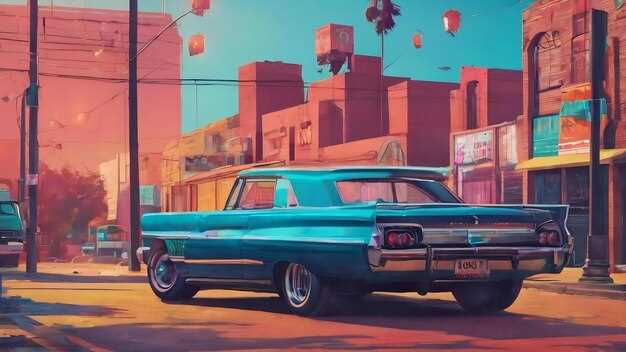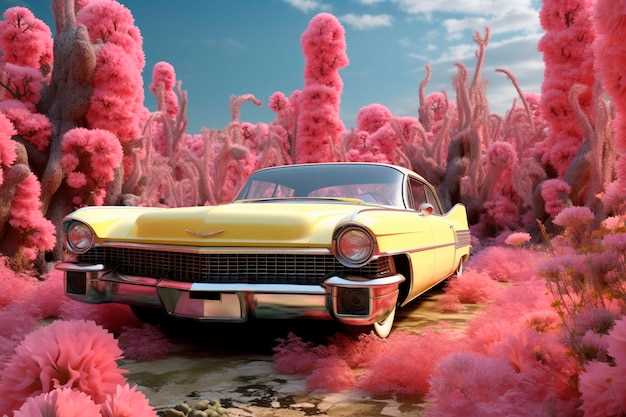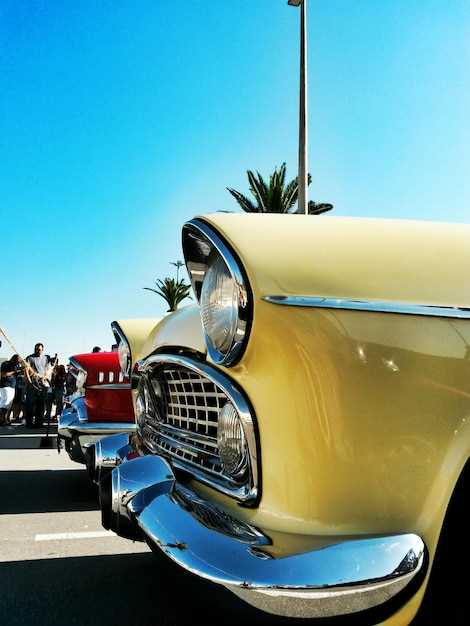
Throughout the decades, classic cars have transcended their mere functionality as vehicles, becoming iconic symbols embedded in American pop culture. These magnificent machines have not only represented freedom and innovation but have also significantly shaped artistic expressions, particularly in television. From cult classics to mainstream hits, the presence of vintage automobiles in popular shows has left an indelible mark on viewers’ perceptions and aspirations.
The allure of classic cars is often intertwined with the narratives presented in television series, where they serve as more than background props. They embody the unique character traits of their owners, reflecting societal values and the zeitgeist of the eras in which they appear. The portrayal of these automobiles frequently evokes nostalgia and romance, drawing audiences into a world that celebrates the craftsmanship and design of a bygone era.
As we delve into the intersection of classic cars and American pop culture, it becomes evident that their influence extends beyond entertainment. These automobiles have become cultural artifacts, often prompting discussions about identity, status, and the American dream. By examining their role in iconic television moments, we uncover a deeper understanding of how classic cars continue to resonate with generations, shaping ideas and aspirations within society.
The Impact of Classic Cars in Iconic American Films
Classic cars have played a significant role in shaping American cinema, often becoming characters in their own right. These vehicles are not just means of transportation; they symbolize freedom, rebellion, and the quintessential American experience. Films like “American Graffiti” and “Bullitt” showcase classic cars as central elements that enhance the narrative and evoke nostalgia.
In “American Graffiti,” the presence of classic cars is integral to portraying the culture of the 1960s. The film captures the essence of youth, friendship, and the thrill of cruising in powerful machines. The iconic ’32 Ford Coupe becomes a representation of dreams and aspirations, resonating with audiences and solidifying its place in pop culture.
“Bullitt,” featuring Steve McQueen, is renowned for one of the greatest car chase sequences in cinematic history. The film’s Mustang not only elevates the action but also embodies the coolness and grit of its main character. This movie set the standard for future films, illustrating how automobiles can enhance storytelling and create lasting impressions on viewers.
Moreover, classic cars have become icons in their own right, influencing fashion, music, and even television. Shows like “Knight Rider” with KITT and “The Dukes of Hazzard” featuring the General Lee highlight how these vehicles resonate beyond the film realm, becoming cultural symbols. The relationship between classic cars and their respective stories continues to capture the imagination of audiences, proving their enduring impact on American pop culture.
In summary, classic cars in iconic American films do more than just provide transportation. They enrich narratives, symbolize deeper themes, and solidify their roles in American history, both on the silver screen and within the larger context of popular culture.
Television Series Showcasing Classic Cars as Cultural Symbols

Classic cars have played a significant role in shaping American pop culture, particularly through television series that feature these iconic vehicles as more than just modes of transportation. They serve as cultural symbols, representing freedom, rebellion, and nostalgia for a bygone era.
One of the most notable examples is “Knight Rider,” which premiered in 1982. The series featured KITT, an advanced, talking 1982 Pontiac Trans Am. This car became a character in its own right, symbolizing innovation and adventure. KITT’s sleek design and high-tech features captivated audiences, fostering a connection between technology and classic automotive design.
Another influential show is “The Dukes of Hazzard,” which aired from 1979 to 1985. The General Lee, a 1969 Dodge Charger, became a cultural icon, representing the spirit of the South and a sense of youthful rebellion. The car’s distinctive orange paint and confederate flag roof sparked discussions about heritage and controversy, demonstrating how a vehicle can carry powerful cultural implications.
“Happy Days”, set in the 1950s, featured classic cars like the 1957 Chevy Bel Air and the 1958 Ford Thunderbird. These cars not only defined the characters’ lifestyles but also embodied a sense of Americana, capturing the post-war optimism and the burgeoning youth culture. The show’s nostalgic portrayal contributed to the revival of interest in classic cars during the 1970s and 1980s.
More recent series like “American Graffiti,” although primarily a film, inspired numerous television adaptations and specials centered around classic cars. This franchise showcased the car culture of the 1960s and 1970s, leading to a resurgence of vintage vehicles in mainstream media. The focus on car gatherings and drag races emphasized both community and competition, further embedding these cars into the cultural fabric.
Ultimately, television series have played an essential role in elevating classic cars to cultural symbols, reflecting societal values and trends. These iconic vehicles continue to resonate with audiences, influencing perceptions of identity, freedom, and nostalgia throughout American pop culture.
Collecting Classic Cars: Trends and Influences in Pop Culture

Classic car collecting has become a significant aspect of American pop culture, reflecting broader trends in media, nostalgia, and lifestyle. The fascination with classic automobiles often stems from their depictions in films, where iconic vehicles serve as character extensions and symbols of freedom and rebellion. Movies like “American Graffiti” and “The Fast and the Furious” franchise highlight specific models, effectively embedding them in popular consciousness and driving demand among collectors.
The resurgence of interest in vintage cars is also fueled by social media platforms, where enthusiasts showcase their collections, restoration projects, and road trip adventures. This online community promotes a shared passion, igniting trends that influence purchasing decisions. The visibility of classic cars in modern films, television series, and social media has created a desirability that transcends age groups, making it a unifying force among collectors.
Additionally, the cultural significance of certain classic models plays a crucial role in shaping collecting trends. Vehicles like the Ford Mustang and Chevrolet Corvette not only represent automotive engineering milestones but also embody the ideals of American culture, such as individuality and performance. As these cars appear in sentimental contexts within film narratives, their value and collectability are further enhanced.
Moreover, gatherings such as car shows and auctions have become significant events in the classic car community, drawing attention from both collectors and non-collectors alike. These events often feature cars that have made cinematic history, increasing their collectibility. The interaction among enthusiasts at these venues fosters a deeper appreciation for the vehicles and their impact on both pop culture and automotive history.
In conclusion, the interplay between classic cars and pop culture continues to shape collecting trends, making vintage vehicles not just items of personal passion but also icons that resonate within the broader context of American identity and history. As film and media evolve, they will undoubtedly continue to influence the classic car market, ensuring that these automotive treasures remain integral to the cultural narrative.
